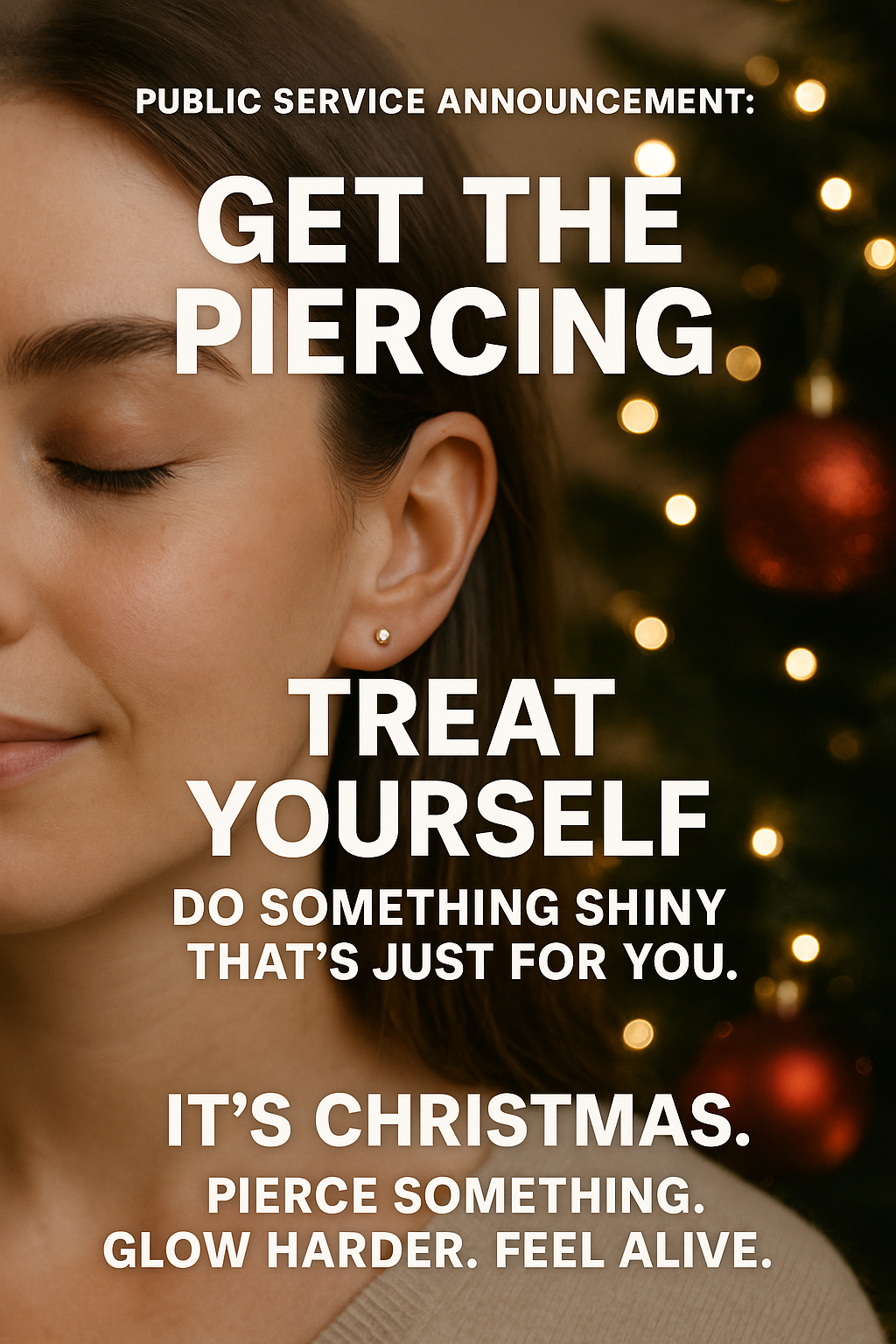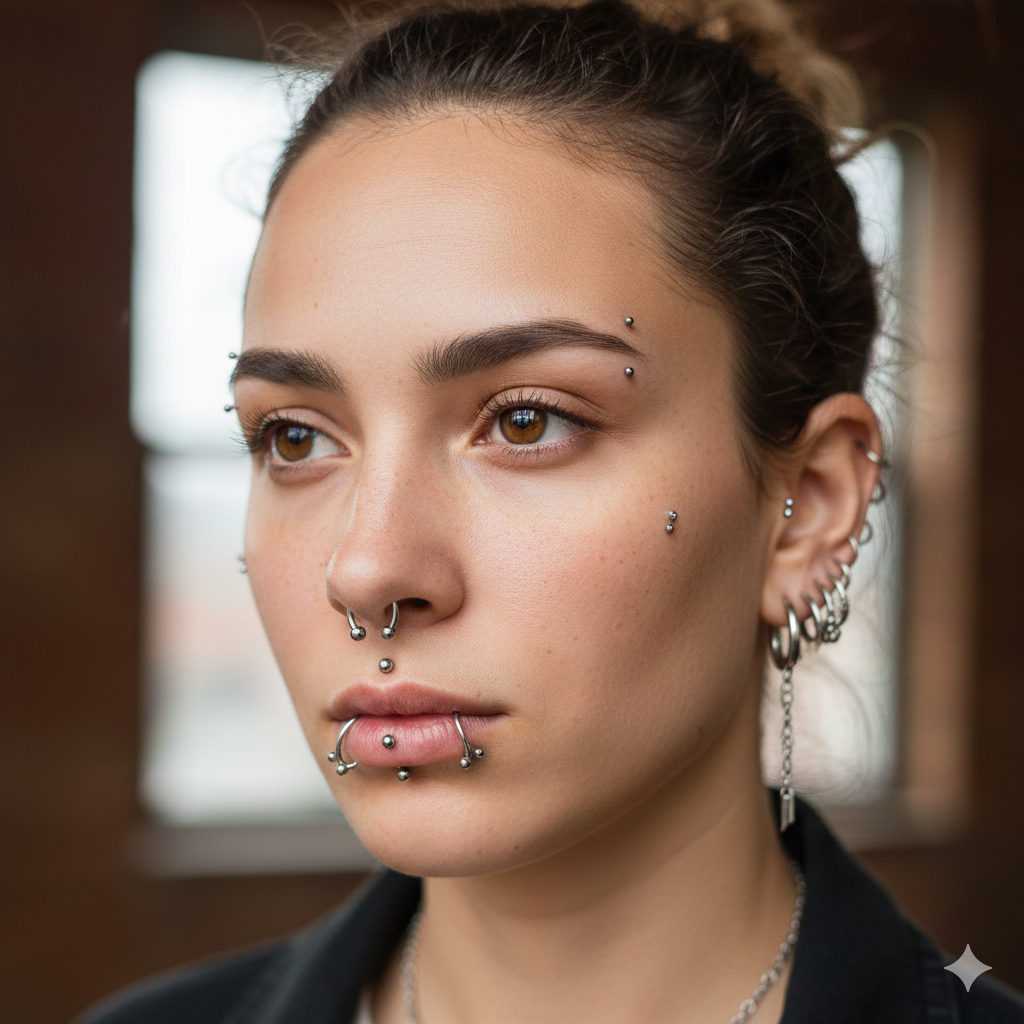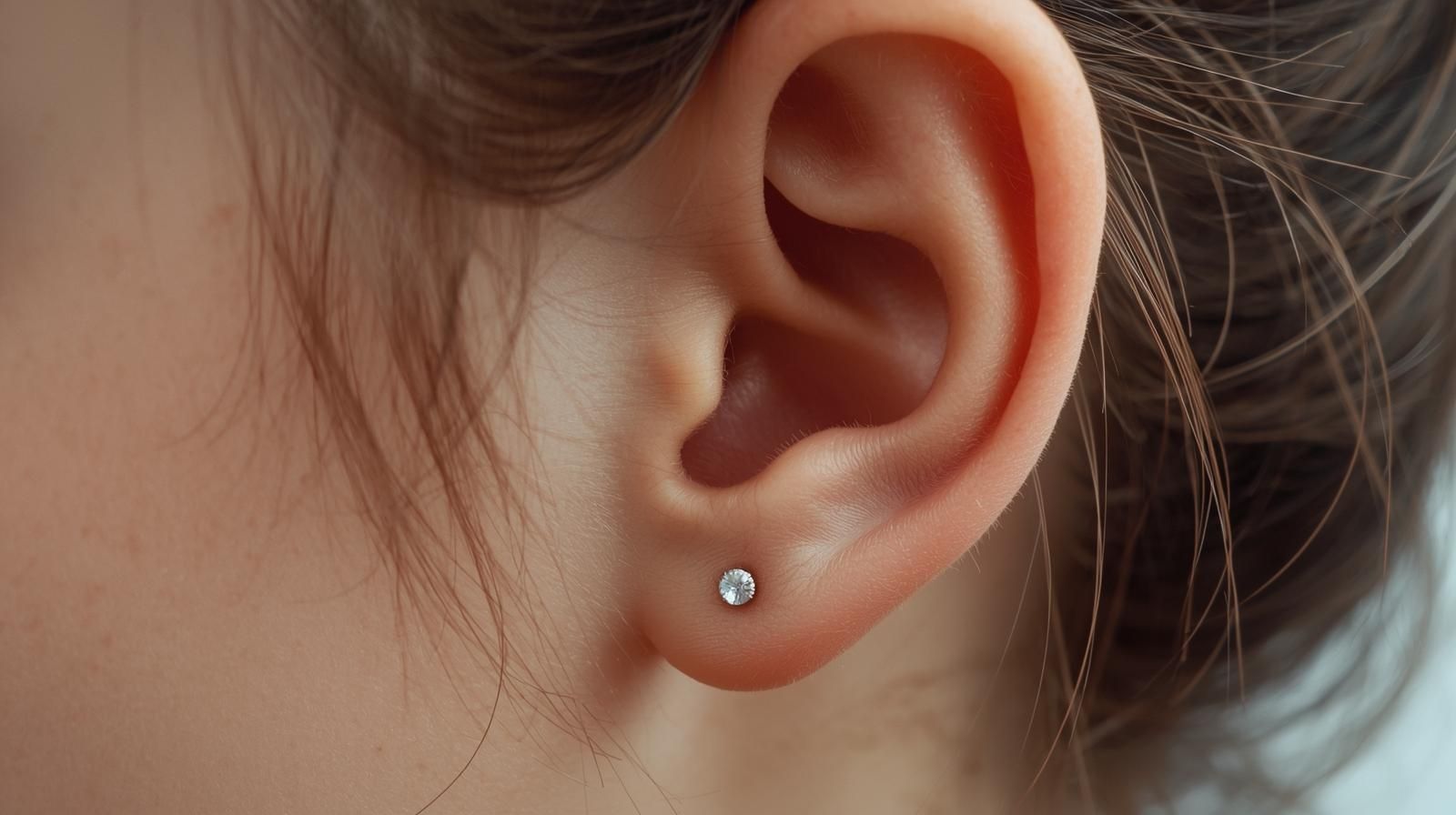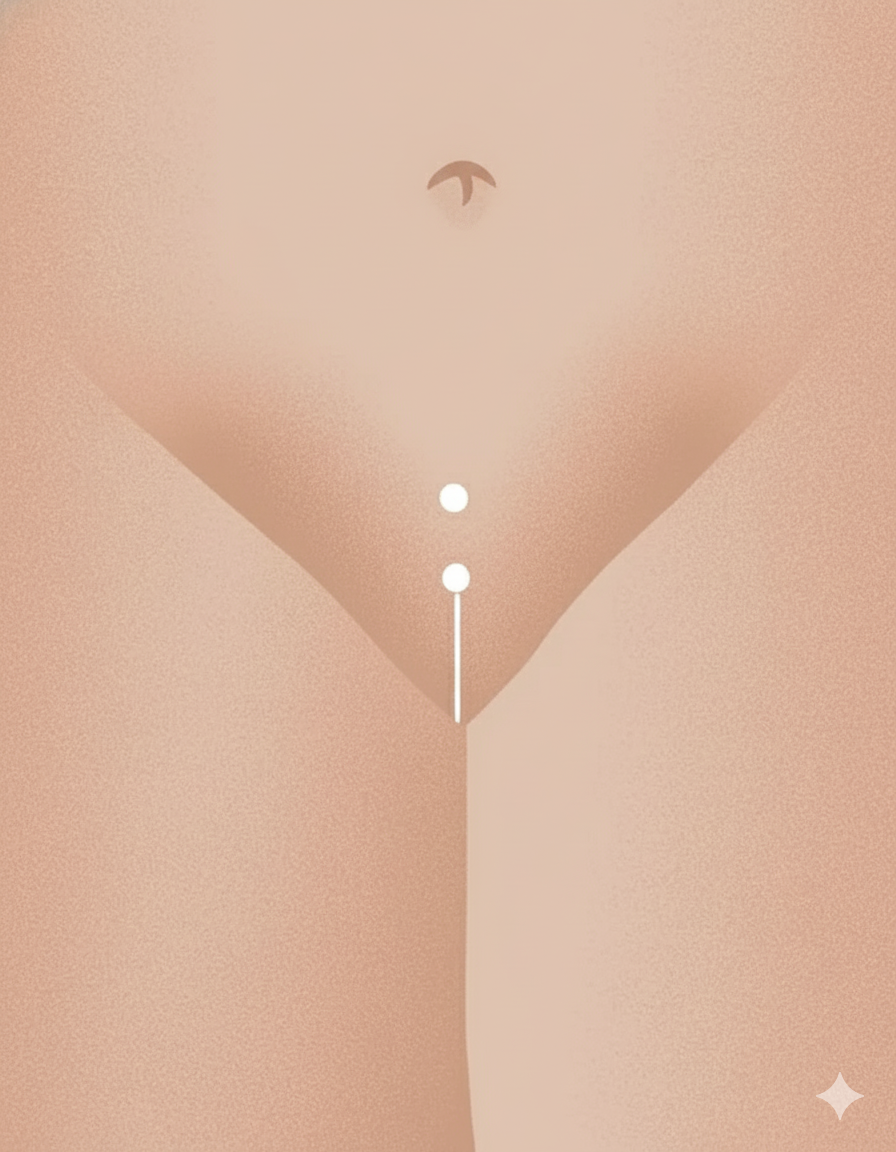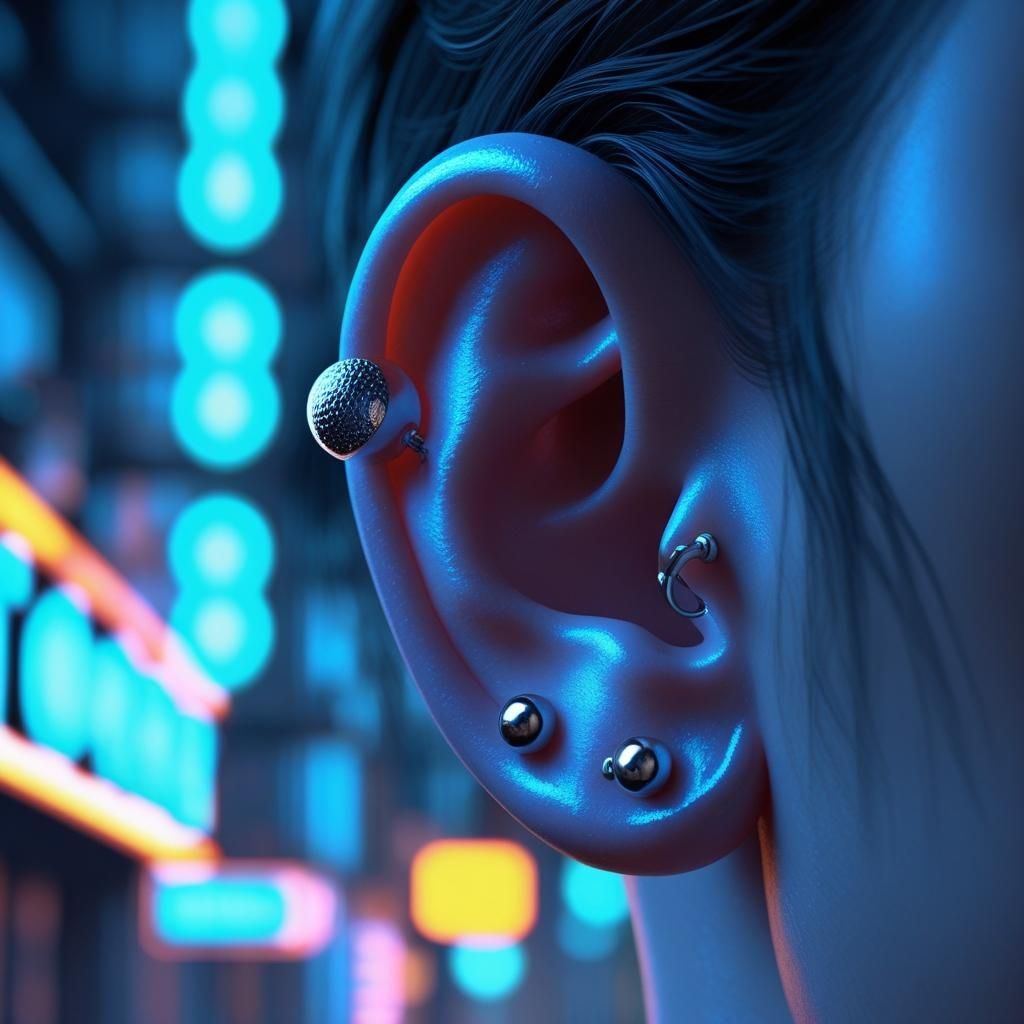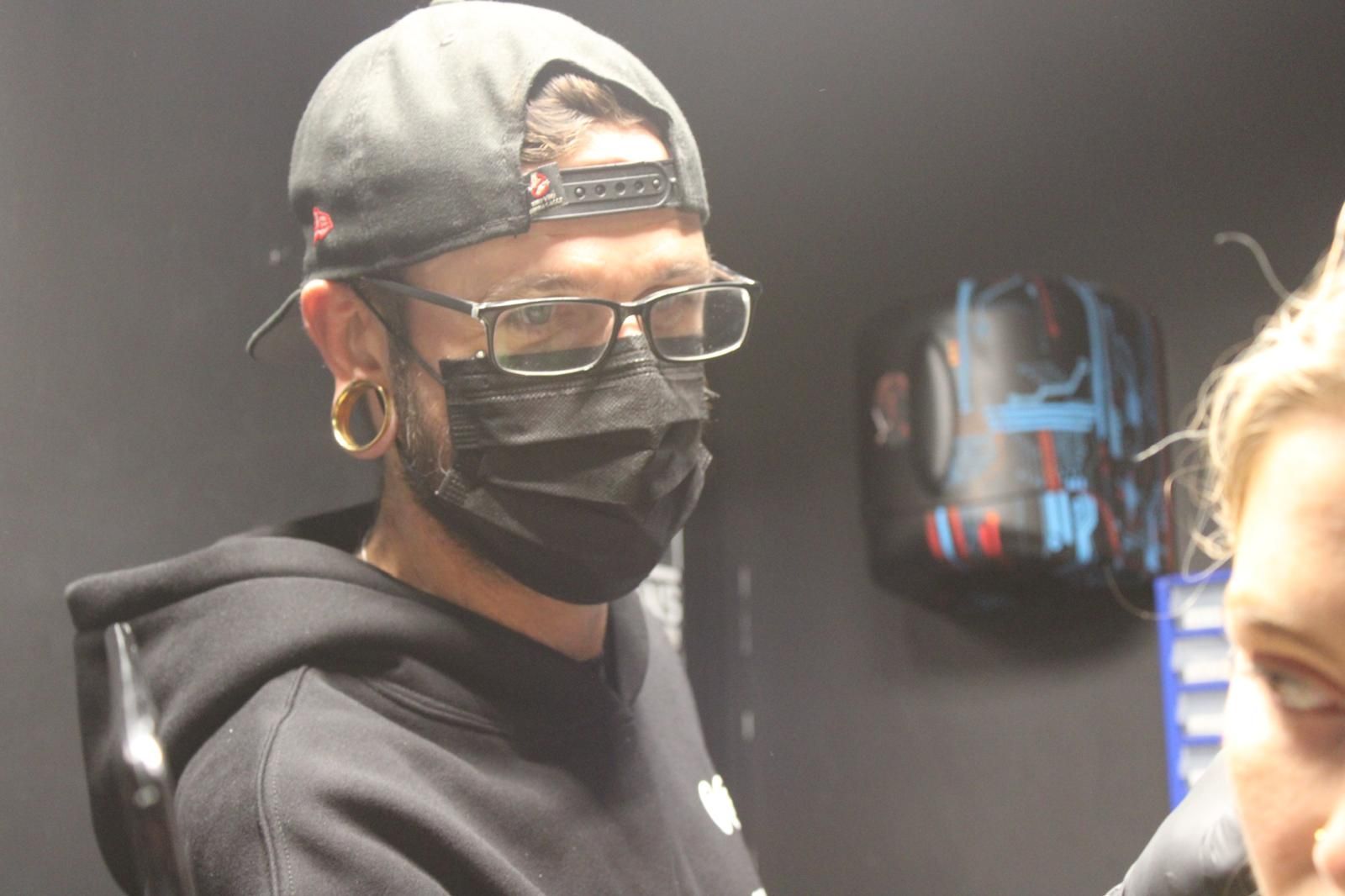All Piercing Healing Times As Recommended By Professional Piercers
Understanding Piercing Healing Times: A Comprehensive Guide
Piercing has been a popular form of body modification for centuries, and it continues to be a widely embraced practice today. Whether you're considering an ear, facial, or even a more intimate piercing, understanding the healing times involved is crucial to ensure a smooth and healthy healing process. This guide aims to provide detailed information on the healing times for various piercings, alongside practical advice for aftercare, to help you make informed decisions and care for your new piercing effectively.
Introduction to Piercing Healing
When you decide to get a piercing, it's essential to recognise that healing is a process that requires patience and proper care. Healing times can vary significantly depending on the type of piercing, its location, and individual factors such as your body's natural healing capabilities and how well you follow aftercare instructions. It's important to distinguish between initial healing and full healing:
Initial Healing
This phase occurs when tenderness subsides, and the piercing is no longer overly sensitive. During this time, regular cleaning can be reduced, but caution is still needed. For example, a typical earlobe piercing might feel less tender after a few weeks, allowing more comfortable handling. However, it's crucial to remember that even if it feels healed, the tissue inside is still repairing itself. Many individuals mistakenly assume that a lack of surface discomfort equates to complete healing, which can lead to premature changes in jewellery and subsequent complications.
Full Healing
This is when the internal tissue has completely formed, allowing jewellery to be safely changed without risking damage or infection. For instance, a well-healed nostril piercing can withstand jewellery changes with minimal risk of irritation or infection. Full healing signifies that the body's natural processes have fully integrated the piercing, reducing the likelihood of complications. It is essential to recognise that the healing process is not merely about the absence of pain but involves the complete regeneration of skin tissue.
Ear Piercings Healing Times
Ear piercings are among the most common types of body modifications. However, they encompass a wide range of specific piercings, each with its own healing timeline. Understanding the nuances of each type can aid in setting realistic expectations and planning for the necessary aftercare.
Earlobe Piercing
Estimated Healing Time: 6–8 weeks
Notes: This is the fastest-healing piercing. However, stretching the piercing by changing jewellery too soon can delay healing. A case study from a popular London piercing studio showed that clients who adhered strictly to aftercare advice experienced faster healing times and fewer complications. It's advised to avoid heavy earrings during the healing phase to prevent elongation or stress on the tissue. Furthermore, maintaining a cleaning schedule that includes saline rinses can help prevent any irritation or infection, ensuring a smooth healing process.
Upper Lobe/Second/Third Lobe
Estimated Healing Time: 8–12 weeks
Notes: These piercings heal slightly slower than the initial earlobe piercing due to the increased distance from the natural blood supply. Many piercers report that clients who sleep on their sides often experience prolonged healing times due to pressure on the piercings. Using a neck pillow to avoid direct contact during sleep can significantly improve healing outcomes. It's also beneficial to select jewellery made from hypoallergenic materials to prevent allergic reactions or adverse skin responses.
Helix (Outer Rim)
Estimated Healing Time: 6–12 months
Notes: Cartilage heals more slowly than softer tissues. Avoid applying pressure to the area when sleeping. A client survey conducted in Manchester revealed that those who used silk pillowcases reported less irritation and faster recovery times. The firm structure of cartilage means any trauma, such as snagging on a hat, can set back healing significantly, so extra caution is advised. Regular check-ins with your piercer can help monitor progress and address any concerns promptly.
Forward Helix
Estimated Healing Time: 6–12 months
Notes: This area is prone to irritation bumps, especially from hair or headphones. An example of effective aftercare includes using a saline solution spray twice daily and avoiding over-the-ear headphones. A report by a well-known piercing studio highlighted that clients who switched to in-ear styles had fewer issues with irritation bumps, leading to smoother healing. It's also crucial to ensure that hair products do not come into contact with the piercing, as they can cause further irritation.
Tragus
Estimated Healing Time: 6–12 months
Notes: Initial swelling is common. It's advisable to avoid using earphones early in the healing process to prevent irritation. Many piercers recommend using earphones specifically designed for piercing wearers, which rest softly without applying pressure to newly pierced areas, thus reducing irritation and promoting healing. Consistent cleaning with a saline solution can help manage swelling and prevent infection.
Anti-Tragus
Estimated Healing Time: 9–12 months
Notes: This piercing is more susceptible to infection and requires gentle cleaning. A study on piercing aftercare showed that using saline compresses can help reduce swelling and promote healing. Customers who regularly engaged in physical activities noted that sweat management was crucial, as excessive moisture can increase the risk of infection. Wearing breathable fabrics that wick away moisture can help maintain a dry environment, conducive to healing.
Conch (Inner Ear Cup)
Estimated Healing Time: 6–12 months
Notes: The conch may remain tender for several months; avoid sleeping on it to reduce discomfort. Experienced piercers often recommend using a travel pillow for side sleepers to minimise pressure on the piercing. Furthermore, keeping the area dry and clean significantly decreases the chances of developing irritation bumps. It is also advisable to avoid swimming in public pools during the initial healing stage, as bacteria in the water can lead to infections.
Daith
Estimated Healing Time: 6–9 months
Notes: The thick cartilage in this area can trap moisture, which may prolong healing. Anecdotal evidence from piercing enthusiasts suggests that regular saline soaks can help in drawing out trapped moisture, thus aiding in reducing the healing time. Customers who practiced this method noted a marked improvement in tenderness and irritation levels. Additionally, avoiding direct water exposure, such as during showers, can help maintain a dry environment.
Rook
Estimated Healing Time: 6–12 months
Notes: This sensitive piercing is prone to irritation and swelling, requiring careful attention during aftercare. Using a gentle, non-alcoholic cleaning solution can prevent irritation. Additionally, many clients find that avoiding hats that press against the area can prevent undue trauma and facilitate the healing process. Regularly checking the tightness of jewellery can also prevent excessive movement, which might otherwise hinder healing.
Snug
Estimated Healing Time: 9–12+ months
Notes: One of the slower-healing ear piercings, the snug requires diligent care to prevent complications. Piercing professionals advise against sleeping on the side of the snug piercing and recommend a consistent routine of cleaning with saline solution to prevent infection. Regular check-ups with a piercer can ensure that the healing is on track. It's also beneficial to monitor for any signs of rejection or migration, which are more common with this type of piercing.
Industrial (Scaffold)
Estimated Healing Time: 9–12+ months
Notes: Comprising two piercings connected by one bar, any trauma can reset the healing process. A comprehensive study from a body modification conference indicated that clients who avoided activities that could potentially snag or pull on the barbell reported fewer issues. Regular check-ups to monitor alignment and swelling can help ensure a successful healing process. It's also crucial to ensure that the barbell is of appropriate length to accommodate swelling, reducing the risk of irritation.
Flat/Outer Conch
Estimated Healing Time: 9–12 months
Notes: As a cartilage surface piercing, it requires careful cleaning to avoid irritation. Clients who used sterile saline sprays twice daily reported fewer incidents of crusting and swelling. The application of a non-woven gauze soaked with saline can help in keeping the piercing clean and free from bacteria. It's also important to ensure that no foreign substances, such as hair products, come into contact with the piercing.
Nose & Facial Piercings Healing Times
Facial piercings offer a bold way to express individuality. However, they are also highly visible, making proper healing crucial to avoid unwanted complications. Understanding the specific needs of different facial piercings will help in maintaining their aesthetic appeal.
Nostril
Estimated Healing Time: 4–6 months
Notes: This piercing can easily snag on clothing or during washing, which can delay healing. A survey from piercing specialists found that using a barrier method, such as covering the piercing with a small piece of breathable fabric during dressing, significantly reduced incidents of snagging. Clients who practiced this method experienced smoother healing progress. It's also recommended to refrain from using facial products that could irritate the piercing site.
Septum
Estimated Healing Time: 6–8 weeks
Notes: Known for being one of the fastest-healing cartilage piercings, the septum heals relatively quickly with proper care. A case study from a reputable piercing studio showed that clients who followed a strict saline cleaning regimen healed within the expected timeframe and experienced fewer complications such as septum bumps. It's also advisable to avoid any actions that could disturb the piercing, such as nose-blowing, during the initial healing phase.
Bridge (Erl)
Estimated Healing Time: 8–12 weeks
Notes: As a surface piercing, it is prone to migration and rejection, necessitating careful monitoring. A detailed observation by body modification experts revealed that clients who avoided excessive facial expressions and ensured minimal movement at the piercing site experienced better healing outcomes and reduced risk of rejection. It's also important to protect the area from direct sunlight, which can exacerbate irritation.
Eyebrow
Estimated Healing Time: 2–3 months
Notes: This piercing may reject over time. It's important to avoid applying makeup around the site to prevent irritation. A beauty industry survey indicated that clients who adhered to this advice reported fewer instances of irritation and swelling. Using hypoallergenic products, if necessary, can also minimise the risk of adverse reactions. Regularly checking the piercing for any signs of rejection, such as increased redness or tenderness, can help in early intervention.
Cheek/Dimple
Estimated Healing Time: 6–12 months
Notes: High initial swelling is common, and there is a risk of scarring or developing "cheek tunnels." A case study in advanced piercing techniques found that clients who diligently practiced saline rinses and abstained from using abrasive skincare products experienced less severe swelling and reduced risk of long-term scarring. It is also beneficial to maintain a soft diet initially to avoid exacerbating swelling through excessive chewing.
Oral Piercings Healing Times
Oral piercings, while unique and striking, require particular attention to hygiene due to their location in the mouth. Proper care during the healing phase is crucial to prevent infections and ensure long-term success.
Tongue
Estimated Healing Time: 4–6 weeks
Notes: Significant swelling occurs in the first week. It's advisable to replace the initial barbell with a shorter one once swelling subsides. A study by dental health professionals found that using an antiseptic mouthwash post-meals greatly reduced the risk of infection and promoted faster healing. Clients who adhered to this regimen reported minimal complications. Additionally, avoiding spicy and acidic foods during the initial healing phase can prevent irritation.
Tongue Web (Frenulum)
Estimated Healing Time: 4–8 weeks
Notes: This piercing involves very thin tissue and may migrate if not properly cared for. A detailed observation in oral piercing trends showed that clients who practiced careful cleaning and avoided spicy foods during the healing period experienced fewer issues with migration and irritation. It's also important to refrain from playing with the piercing using the tongue, which could exacerbate irritation.
Lip (Labret, Side, Snake Bites)
Estimated Healing Time: 6–8 weeks
Notes: While the inside heals quickly, the outer part of the lip takes longer. A case study from a prominent body modification studio indicated that clients who used non-alcoholic mouthwash and avoided acidic foods reported smoother and faster healing. Regularly checking the piercing for any signs of irritation or infection can help in early intervention.
Vertical Labret
Estimated Healing Time: 8–10 weeks
Notes: The outer surface of the lip requires extra time for healing. Clients who maintained optimal oral hygiene and avoided lip balms with harsh chemicals experienced fewer issues with irritation and swelling, as reported by a body art health survey. It's also beneficial to avoid excessive movement of the lip during the initial healing phase, such as pouting or pursing.
Medusa (Philtrum)
Estimated Healing Time: 6–12 weeks
Notes: Swelling and irritation from makeup are common, requiring careful aftercare. A beauty industry study indicated that clients who chose hypoallergenic and fragrance-free products had better healing outcomes and experienced less irritation around the piercing site. It's also advisable to avoid any actions that could disturb the piercing, such as excessive facial expressions or touching the area unnecessarily.
Monroe/Madonna
Estimated Healing Time: 6–12 weeks
Notes: Similar to the Medusa, this piercing needs monitoring for gum recession. Dental health professionals recommend regular check-ups to ensure that the jewellery is not causing undue pressure on the gums, which could lead to recession or other oral health issues. It's also beneficial to select jewellery made from biocompatible materials to reduce the risk of adverse reactions.
Smiley (Upper Frenulum)
Estimated Healing Time: 4–8 weeks
Notes: Due to the thin tissue involved, this piercing is often temporary. A detailed review of oral piercings found that clients who avoided playing with the jewellery using their tongue experienced fewer issues with migration and rejection. Regularly checking the piercing for any signs of movement or rejection can help in early intervention.
Frowny (Lower Frenulum)
Estimated Healing Time: 4–8 weeks
Notes: Rarely performed, this piercing often rejects or migrates. Clients who maintained strict oral hygiene practices and avoided excessive lip movement reported better retention rates, as noted in a piercing longevity study. It's also important to monitor for any signs of irritation or infection, which can exacerbate rejection.
Body Piercings Healing Times
Body piercings vary greatly in healing times, largely due to the diverse nature of the tissues involved. Understanding the specific needs of each type can aid in ensuring a smooth healing process.
Navel/Belly Button
Estimated Healing Time: 6–12 months
Notes: This area is easily irritated by clothing and movement, necessitating careful attention to avoid complications. A survey among clients with navel piercings found that those who wore loose-fitting clothing and avoided tight waistbands experienced faster healing and fewer instances of irritation. It's also beneficial to ensure that the jewellery is of appropriate length to accommodate any swelling.
Nipple
Estimated Healing Time: 6–12 months
Notes: Nipple piercings tend to remain tender for several months. Avoiding friction is key to a smooth healing process. Clients who wore breathable, non-restrictive clothing and practiced gentle cleaning reported more comfortable healing experiences, as indicated by a comprehensive study on body piercing care. It's also crucial to avoid any activities that could disturb the piercing, such as contact sports, during the initial healing phase.
Surface Piercings
Estimated Healing Time: 6–12 months (varies)
Notes: These piercings are prone to rejection, and using surface bars or dermal anchors can help mitigate this risk. A case study on surface piercing techniques demonstrated that clients who followed professional aftercare advice and avoided unnecessary pressure on the piercing site had lower rates of rejection. Regularly checking the piercing for any signs of irritation or movement can help in early intervention.
Dermal Anchor/Microdermal
Estimated Healing Time: 6–12 weeks to anchor, permanent
Notes: Long-term care is required, as these piercings may reject over time. A detailed observation from body modification experts revealed that clients who maintained a strict cleaning regimen and avoided trauma to the area experienced better long-term retention of their dermal implants. It's also important to ensure that the jewellery is of appropriate size and shape to reduce the risk of rejection.
Genital Piercings Healing Times
Genital piercings, while less common, require specialised care due to their sensitive location. Understanding the specific needs of each type can aid in ensuring a smooth healing process.
Female - Clitoral Hood (Vertical)
Estimated Healing Time: 4–8 weeks
Notes: This piercing heals quickly with minimal tissue disruption. A study on genital piercings highlighted that clients who adhered to recommended aftercare and avoided friction from tight clothing experienced faster and more comfortable healing. It's also beneficial to ensure that the jewellery is of appropriate size and shape to reduce the risk of irritation.
Female - Clitoral Hood (Horizontal)
Estimated Healing Time: 6–8 weeks
Notes: Although slightly longer to heal than the vertical counterpart, it requires careful placement to ensure proper healing. Piercers with extensive experience in genital piercings report that proper placement and sizing of jewellery are crucial factors in promoting successful healing. It's also important to avoid any activities that could disturb the piercing, such as cycling, during the initial healing phase.
Female - Labia (Inner)
Estimated Healing Time: 6–8 weeks
Notes: Heals relatively quickly, given the softer tissue involved. Clients who followed aftercare guidelines and avoided irritants such as perfumed products reported fewer complications and smoother healing, as found in a study on intimate piercings. It's also beneficial to ensure that the jewellery is of appropriate size and shape to reduce the risk of irritation.
Female - Labia (Outer)
Estimated Healing Time: 3–4 months
Notes: The thicker tissue in this area leads to a slower healing process. A detailed examination of healing times for genital piercings showed that clients who practiced diligent cleaning and avoided unnecessary pressure or friction experienced better healing outcomes. It's also important to ensure that the jewellery is of appropriate size and shape to reduce the risk of irritation.
Male - Prince Albert
Estimated Healing Time: 4–8 weeks
Notes: Known for fast healing, this piercing requires frequent cleaning. Experienced piercers suggest that clients who maintained a regular cleaning schedule and avoided restrictive clothing experienced faster healing times, as supported by a study on male genital piercings. It's also beneficial to ensure that the jewellery is of appropriate size and shape to reduce the risk of irritation.
Male - Frenum
Estimated Healing Time: 6–8 weeks
Notes: Often involving multiple piercings along the underside, it requires careful aftercare. A comprehensive review of frenum piercings found that clients who adhered to aftercare guidelines and avoided excessive movement during healing reported fewer complications. It's also important to ensure that the jewellery is of appropriate size and shape to reduce the risk of irritation.

